Interview
PART 1
PART 2
Filipa Ramalhete
framalhete@autonoma.pt
Centro de Estudos de Arquitetura, Cidade e Território da Universidade Autónoma de Lisboa (CEACT/UAL), Portugal | Centro Interdisciplinar de Ciências Sociais da Universidade Nova de Lisboa (CICS.Nova)
João Caria Lopes
joaocarialopes@gmail.com
Atelier BASE | Centro de Estudos de Arquitetura, Cidade e Território da Universidade Autónoma de Lisboa (CEACT/UAL), Portugal
Para citação: RAMALHETE, Filipa; LOPES, João Caria – Entrevista à Marusa Zorec. Estudo Prévio 13. Lisboa: CEACT/UAL – Centro de Estudos de Arquitetura, Cidade e Território da Universidade Autónoma de Lisboa, 2018. ISSN: 2182-4339 [Disponível em: www.estudoprevio.net]. DOI:
We would like to thank the presence of the architects Manuel and Francisco Aires Mateus, it is a pleasure to have you with us. We would like to start this conversation by talking a little about your journey as architecture students. What subjects and teachers inspired you?
MM – We graduated from the Faculty of Architecture at a difficult time in college, at that moment of the great wave of postmodernists in Portugal. At the time, I was working in the studio of architect Gonçalo Byrne and Francisco was working in the studio of architect Eduardo Trigo de Sousa.
The most striking teachers, for me, were those of Drawing, (Fernando) Conduto and Daciano and in Project, Manuel Tainha, who I had in the 2nd and 5th years. There was also a teacher who started to be important at the Faculty of Architecture, Carrilho da Graça, but I never chose him, I always ended up choosing Manuel Tainha. I remember his classes well enough. In addition to being a great architect, he was a person who gave us the idea that architecture has to do with life, with life as the center of anything. Then, important side teachers, I remember one or two: Maria João Rodrigues – who was a big surprise as a teacher because she was a person with a huge culture – and Maria Calado who was a great history teacher.
FM – I got all this but “worse” … I only managed to catch Manuel Tainha in the 5th year, and he was a bit absent because at the time he had a lot of work, and I also remember, of course, Daciano and Fernando Conduto. The Conduct for the rigor in the work, for the need for the person to focus on what he is doing, that was a very interesting learning. But I must say that, at the Project level, I don’t remember having a year that was really motivating.
MM – It wasn’t just about the teachers. It also had to do with the time. The Faculty was not motivating.
FM – There were times of some confrontation in the school itself, by the Management, by the control of the school. There were no concerns that today seem banal in a school. And we lived a little disconnected, there was no university involvement that would be recommended … there were classes, but there wasn’t exactly a very interesting environment. Manel’s class was much stronger, because it was practically the same from beginning to end, and had better luck with the teachers.
And how did you manage the classes with the work in the studio?
MM – Classes started at eight in the morning and ended at two in the afternoon and there were a lot of people working in workshops. It was a different time! We went out and went to the studio and only then did the work for college. Studying, little…

© João Carmo Simões .com – Todos os direitos reservados
Was the choice for Architecture an obvious choice?
FM – I would say it was more or less natural. Our mother is a painter and our father was an architect, so something there would be. In my case, I was still seeing Design, Architecture … then I took, at António Arroio (school), those professional courses, where I was at school all day, with workshops, and I realized that it would really be Architecture.
MM – You had a great ability to reach out to many things. First you were a drummer and you had that thing about painting, making t-shirts, making animation, which were things with a relative openness to other possibilities and, therefore, in that sense, it seems to me that you hesitated more. In my case, I didn’t hesitate. It was architecture. As a kid I still thought about doing Law, due to my grandfather’s family influence. But in reality, architecture has always been evident. My godfather, José Grade, was the director, and a great professor of drawing, at the Faculty of Porto (in fact, I would have liked to have gone to Porto but at that time it was difficult times… in the 80s everything was complicated, there was little money and I ended up staying in Lisbon, and Francisco too). Our mother was a friend of that generation of Siza and Soutinho and I felt a little sorry for not having gone to the Faculty of Porto – because it was, obviously, a college with another level. The Faculty of Lisbon in the 1980s was mediocre.
When you start your experience as teachers is it with the objective of not doing what they had done to you?
MM – This is safe! But, in fact, we started teaching at totally different times. I started teaching immediately after the course, at the age of 23, I was teaching technical courses and then I taught Project. I also taught at Lusíada, but I always stayed at the Faculty of Architecture. I was lucky to have two very interesting experiences: one was to help Tainha and another was to help Manuel Graça Dias, which was, for me, from the teaching point of view, perhaps the richest experience I had. I was a kind of second-hand student. I learned to teach with Graça Dias, who is an extraordinary teacher, and who, besides motivating us, opened our minds a lot – to the students and to me – always based on the idea of having great rigor with the work, but at the same time, a huge opening for all things. In teaching but also in professional life.
Then there was a phase in the F.A. in which Carrilho da Graça and Graça Dias left and I stayed with the 5th grade classes and that was what I did the longest, being a 5th grade teacher at the FA, from where, afterwards, I was summarily fired. But by that time, in fact, it was already in transit. At that time, at Lusíada, I had a very interesting time, especially for teaching with our cousin José Maria Assis e Santos. Then, we started doing small international experiences – first I was the one who taught and then Francisco starts teaching when we go to Mendrísio, 13 years ago.
FM – At that time we were already committed to Autónoma (UAL) but as we were about to teach classes for the 3rd year, Mendrísio ended up starting, effectively, before.
MM – Mendrísío was the meeting with a school that had Peter Zumthor, a great reference for us, as an architect and as a teacher. I remember that we went to see Zumthor’s (students) projects at night, when everyone was going to bed! And that college ended up becoming our Faculty. We still did other experiments, we went to Harvard, but it was a school that didn’t really add anything special, and we did some specific things, for example a 5-day course in Spain and Oslo, looking for different classes in Slovenia, where we went to give courses. In our faculties we tend to do things that we have already mastered, because we know students and they also know us, and sometimes we have to go abroad, in some way, if we can gauge what we are doing.
Anyway, from the moment we started teaching together, teaching started to be a central activity. We don’t have the studio but the teaching, we have the studio and we teach. I am not an architect and furthermore I teach, I do not even distinguish one thing from the other. For me, being teaching or working is basically the same.
FM – Even in terms of time, right now, I have time equally divided.
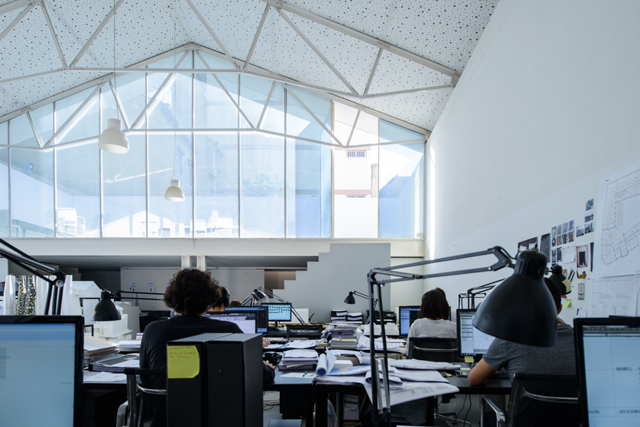
© João Carmo Simões .com – Todos os direitos reservados
Do you see teaching as a continuity of the atelier?
MM – Or it is the studio that is part of the investigation of the classes … there is no distinction. It has always seemed fundamental for us to have a very direct relationship with teaching. Teaching is one of the most direct activities in its results: a person receives what he gives. You don’t receive without giving, and when you give, you always receive.
And how was the experience of participating in the creation of a course, as you did at UAL?
MM – UAL had three people who set up the course, (João Luis) Carrilho da Graça, (Manuel) Graça Dias and José Manuel Fernandes. Then, Graça Dias brought Manuel Vicente to 2nd grade, and Carrilho da Graça brought me to coordinate 3rd grade. We were the coordinators of the first four years. I was also dismissed from the Faculty of Architecture, like Manuel Graça Dias and Carrilho da Graça, but I’m 11 years younger than them and so there was a generational gap there, even though we were all in the same position. Then, each person got together with their natural colleagues, Graça Dias with Egas (José Vieira), Carrilho da Graça with Inês Lobo and we joined the two (me and Francisco). This was the initial structure.
Interestingly, when we started we thought we knew everything about architecture courses and we didn’t get it right. We thought we were going to have a course that, when students knew who the architecture teachers would be, UAL would be full of candidates. Something that didn’t happen. UAL had a more interesting array of teachers than any other course, but that did not serve to grow. In fact, there were other courses, even private ones, that were full and that had much greater attractiveness than UAL itself. And the course of UAL, as usual, took a few years to find out what his vocation was. That I think, today, which is much more accurate, based on the idea of responding to students of the 2nd cycle, because this is where it actually has the capacity for attraction, when students already know the architecture panorama and can already choose a clearer way.
FM – This has been the bet that has been won. In the 2nd cycle, they are managing to attract some people in Portugal but many people come from abroad, because they come to look for certain teachers and that is very positive. A school takes many years to implement. Mendrísio is also a school that is only 15 years old and confronts other schools that are 500 years old or 300 years old… I don’t know how old ETH Zurich is. So there are things here that take a long time, even in terms of capturing social recognition, recognition that parents themselves do when they send their children.
MM – But today, in any case, the recognition of quality is relatively quicker.
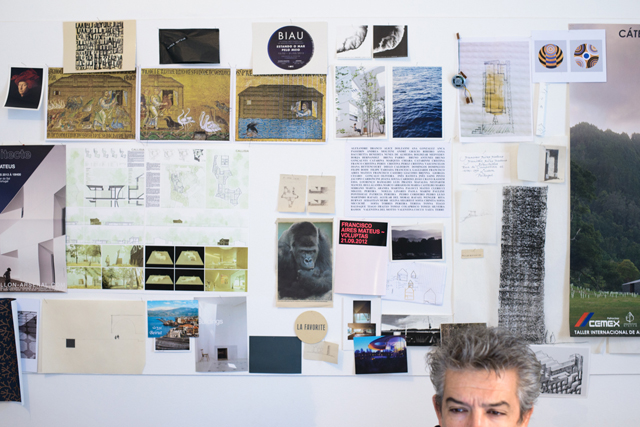
© João Carmo Simões .com – Todos os direitos reservados
But students who leave the UAL Architecture course are very recognized…
MM – This information, which used to take some time to spread, is much faster today. Mendrísio is Zumthor’s school. After 10 years in college, he leaves but the trail remains and that impact is very strong. Zumthor, when he enters college, is more or less anonymous and leaves as one of the most recognized, if not the most recognized, architect in the world, and this somehow drags the image of the school, which later endures.
UAL, on the other hand, has a very interesting phenomenon; I could not resist the departure of some of the teachers, like Carrilho da Graça and like me, who already teach very few classes. But UAL does not lose anything from this. It rebalances perfectly and today has a much clearer role than it once did. And, having that clearer role, it does a much better job than it did.
FM – Clearer and more visible. Basically, students at the school have won Secil prizes one after the other, in an amount that has nothing to do with the size of the school. Because, in fact, there are very few students and there is this vast collection of awards.
MM – But there is the side of prizes and there is the side of being able to do School, and that is even more important.
FM – I think the academic world recognizes this. A student who is in Ajuda knows that there is a climate and a type of work that belongs to Autónoma and that is not theirs. I think the school has that ability.
MM – We have to think that we are talking about a college in a context that is a crisis in teaching. I am not talking about the economic crisis, I am talking about the crisis of the very idea of teaching and of how to teach in architecture. Which is something I don’t know if you have never been in crisis, but in recent years, a sense of crisis in the teaching of architecture has been sharpened. Thus, a sense of crisis has been sharpened in the cultural sense of architecture. These are expectant moments, they are moments of transformation and teaching also goes after it, and I think that the great advantage of UAL is that it has known, rigorously, to position itself in a cultural way. Naturally, it is a university full of difficulties compared to international universities (financial difficulties, technical difficulties, of time, those difficulties that are known) and has always had the capacity to overcome them. And, somehow, build an Identity. We can say that there is an idea of what it is to be a student of Autónoma, and this is a value that is usually not achieved so quickly, starting from the small scale that UAL has always had. Autónoma was never big, it was always a tiny school. And being tiny she got that identity. He didn’t need that time, nor the means that would be the most normal to do so.

© João Carmo Simões .com – Todos os direitos reservados
Going back a little bit, to the division between atelier and teaching, we have already heard students say to make better use of the time they are there because they will never have so much freedom again. Do you enjoy teaching as a space of freedom in the face of professional practice?
MM – We never said that! We always say the opposite. Our experience is very clear, I have much more freedom in my professional life than I did at any time at school. What we tell students is that we do projects in exactly the same way in our professional lives as we do at school. There is no moment of great freedom at school and then there is the moment of tedious work in professional life.
Is it possible to build a boring life? IT’S! But it is also possible to make a boring school. What is needed is to maintain the same spirit with which we do school work and where it is easy to have a certain freedom, throughout life. For a person to be 50 years old and have the same freshness and will and grace that one has at 20, that is what is a plotted job. We have no idea, neither Francisco nor me, that there is a boring professional world. In fact, we do not have a boring life, from a professional point of view. We can have a boring life in which professional life is boring for everyone, which is the hardness of life. But we have nothing to the idea that there is greater freedom in college. My big surprise, and I think Francisco shares that, was – when we started working (right when we started working, no, because we didn’t know anything there) but when we started to control what we were doing – it was discovering that there is enormous freedom to work. And that is still the feeling I have today.
FM – It is essential to have this freedom, because if the person is not part of that level, they are necessarily restricted. And that is the idea we have to pass on to students. The idea that they need to gain their freedom, to maintain it and to understand what that freedom is, which is only possible if it is based on a culturally and intellectually serious attitude. If not, it quickly turns into dizziness. That freedom has to be framed so that it can be a serious value.
Now we would like you to explain a little about your path as architects. We were told that, at a certain point, you were both working in the studio of architect Gonçalo Byrne and then you had the need to create your own studio…
FM – It was a very natural process and that naturalness is largely due to the generosity that Gonçalo had with us. We started to have some works, which are the grandmother’s kitchen – it always starts like this – which later grew in scale and Gonçalo, in the end, supported us in there (we had a room inside Gonçalo’s studio, which was a kind of satellite), and we continued with some collaborations. At some point, we already had some collaborators (from Gonçalo) inside our studio. Until the structure grew to a dimension where it was no longer affordable, nor decent, to be there and we moved, but we moved across the street! You could still stretch the umbilical cord! One studio saw the other!
The naturalness with which this was done, means that we do not have the idea that “now we worked at Gonçalo Byrne and then no longer.” It was a more or less continuous process. And even after we left, we continued to collaborate in contests, it was a very linear and peaceful process.
MM – We caught a very particular moment. We were lucky to work for Santa Casa da Misericórdia de Grândola and started a relationship with that institution, which we always maintained. Then came the contest phase. In two competitions, we were also invited as representatives of young people (they made a selection of architects and then put the “young person”) – the competition for the Order of Engineers and for the Rectory of the Universidade Nova. But it was this change, from the first small jobs, Santa Casa de Grândola, small contests – in Cantina de Aveiro we were still inside Gonçalo’s atelier – and, suddenly, the Order of Engineers came – and that’s when we left , because we needed more collaborators – and then, at the Rectory, we were already out of there because between the contest and the assignment of the project it took a long time… we, in this contest, had been in second…
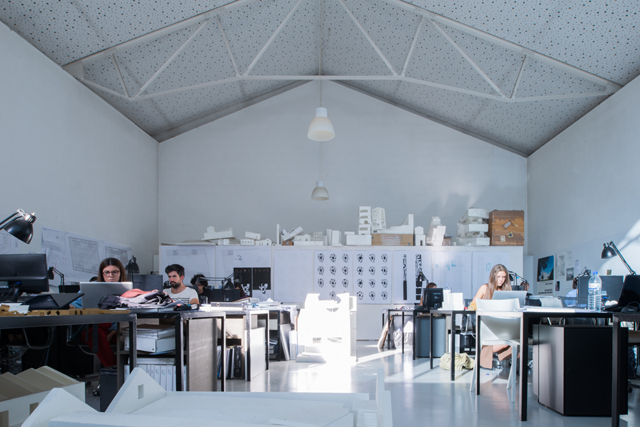
© João Carmo Simões .com – Todos os direitos reservados
When they left, did they come with new wishes, with different ideas, of rupture?
MM – No. We went out to kill the father, somehow, but in a good way.
FM – The exit is always a very positive moment of energy, isn’t it? It’s like when someone leaves their parents’ house.
MM – Just move house, there are always things to fix! At the time, we left in this heady moment when we started to have a lot of work, and huge jobs. Huge as today do not exist! Public and large!
FM – With thousands of square meters! But it was normal. Every day there were four advertisements in the newspaper for new contests.
MM – And we took advantage of that moment to learn the metier: how it is built, what the work is … then, in fact, what is – for us – the principle of our professional life is the hangover of it all!
MM – And we took advantage of that moment to learn the metier: how it is built, what the work is … then, in fact, what is – for us – the principle of our professional life is the hangover of it all!
When, then, there is a hiatus, when we are out of work – I don’t even know why – we did the math and had the money to survive three or four months. And what we did was … forget everything. Begin to redesign everything. And, truly, to think about the work we had been doing. And this ends with Casa de Alenquer, which, for us, is our first project! It was the first project in which we felt that it was truly possible to control a project seriously, in every way, to control what we were doing. In other words, we stopped to think and redesign everything we did, as if Casa de Alenquer was our first project.
And we started with other projects as small as this – Casa de Azeitão, a little house there in Melides – and it was only after some time that we returned to other scales, but already with another sense of control, which we had not had before. And what is funny is that this moment is the foundation phase, which, in fact, was not possible without having experienced a lot of drawing, building a lot, running lots of contests.
FM – And even the attention with which we started looking at the project coincided with that phase when we had to really think about what we were doing.
MM – We didn’t look any longer, we looked with a different conscience!
FM – Yes. But when you are building a 10,000 m2 building, there is a kind of speed that you have to have, which often prevents a person from thinking and understanding what he is doing. All of this gets intoxicating and fascinating! And it is curious that it was the smaller projects that put this in evidence.
MM – It’s funny because we, at the time, said “the simple fact of building already looks like architecture!”. It means that a person, the first time he goes to a construction site, and sees a building of his growing, sees some retaining walls … a person even looks like he has conquered the world! And then he realizes that it is not, and that it was, in fact, necessary to introduce this into a different value range, which has other meanings.
And then there is also a factor that is interesting: when you spend the first time on the first things that we do, there is a kind of criticism given by time about our own work, which is hard learning, but very illuminating.
FM – And a person can already look from the outside, a certain distance has already been created …
MM – When you look at things that have already been done, they are things that no longer change. For better or for worse, they are there! And it is not always easy … a person learns a lot from this kind of criticism, and this crisis phase was good for us because we took this step back and then we actually managed to take a different attitude.
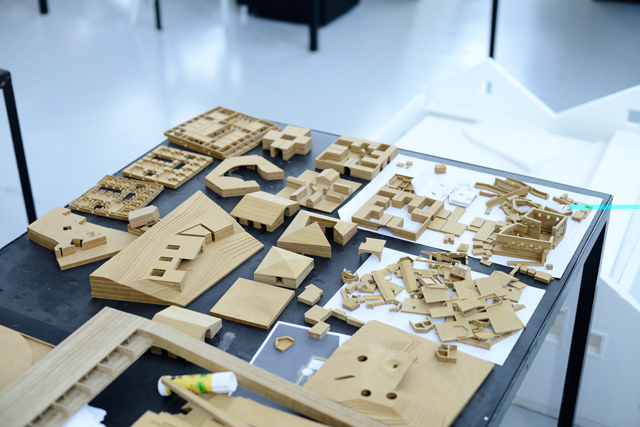
© João Carmo Simões .com – Todos os direitos reservados
During that process, and even now, do you feel that the research done in architecture supports you in some sense?
FM – I think it helps as a good book helps, as a good movie, an extraordinary picture or as a journey full of possibilities … it helps because it is part of the culture.
MM – I agree to some extent … it helps because architecture is about life. Therefore, everything can touch architecture. There is no human activity that does not intersect with architecture! In fact, architecture is a kind of principle of culture, in the sense that it corrects Mother Nature, which, of course, was unsuitable, otherwise we did not exist as a profession.
Then, there is a side that has to do with the theory of architecture, which I think helps, in the sense that it allows us to look at things through the eyes of the other. It’s like going to see a landscape or seeing it photographed by a photographer who admires it. Sometimes the landscape is richer, other times a look from someone who has a critical eye on that landscape makes the landscape richer than it would, in fact, present itself to us, directly. And sometimes, critics have that ability. Because critics are like architects, aren’t they? There are many architects and very few are of interest to us. Now… I like this view of architecture, criticism or reflection on architecture, when it is truly a founder. The most important texts we were faced with were written by architects. Not by men of theory, but by architecture: in Portuguese, texts by Taínha or Siza, international by Zumthor or Herzog.
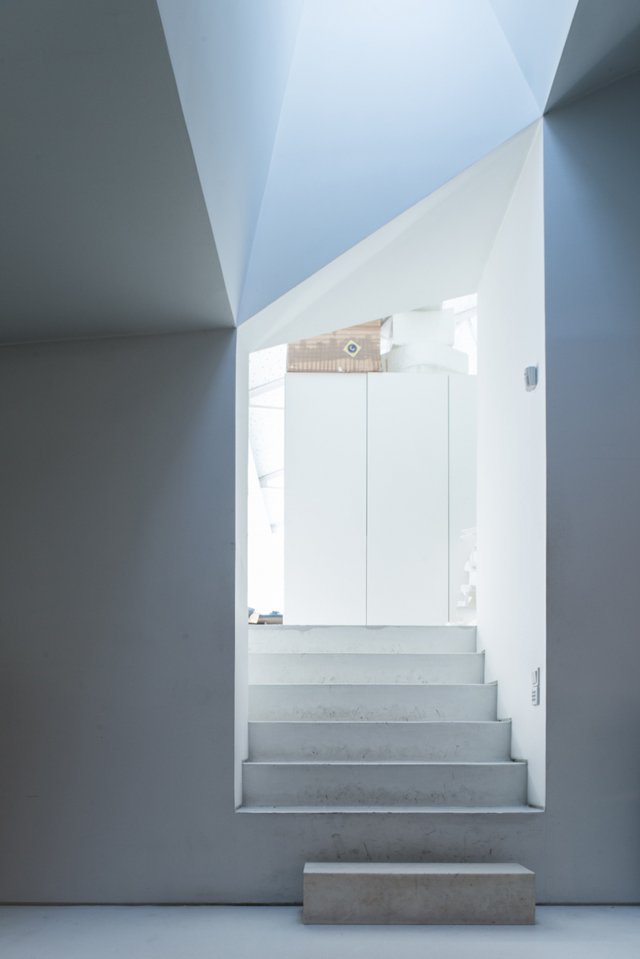
© João Carmo Simões .com – Todos os direitos reservados
And references in terms of built work?
MM – Starting with the dead, which are the most important, Palladio, Borromini; then, the great moderns, the Mies, the Corbusier, which is always unquestionable, and then we can jump to the contemporaries, right?
FM – I’m here browsing the books! There is something that you see a lot in workshops, and that tells us the truth, it is those books that are damaged: they are the ones that are used most!
MM – I once heard a German guy, from theory, who said something with a joke: “history is written in the future.” In the last few months we have been looking at (Sigurd) Lewerentz projects because we need to fine-tune a visible brick joint, and he has some experience. It will be an influence of the past for the future, we will write the influence of the past in the future.
Now if you ask me, “Who is it that really deviated from my lunch to go see?” These certainly, but they don’t do anything new, do they (laughs)? … Then the living ones, Zumthor and Siza, obviously. Of the younger ones, I would visit Sejima, Kerez, Olgiati….
FM – Then, in the middle, there are a series of other nuances. There are things that are revisited on any occasion, architectures or architects who were not paid so much attention and that, for whatever reason, become much more evident and much more interesting.
MM – So by countries, there are three countries to check: Japan, Switzerland and Portugal. They are the three countries to see!
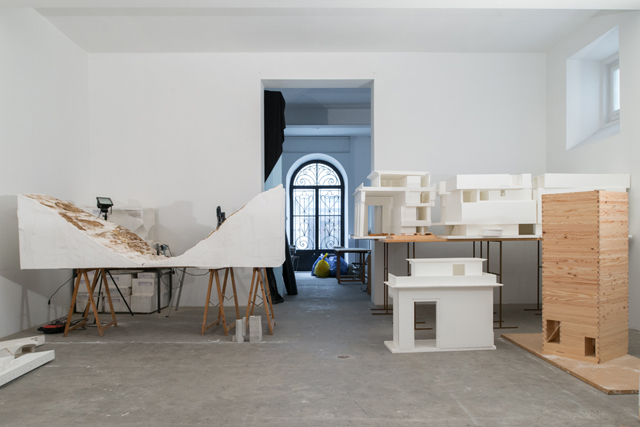
© João Carmo Simões .com – Todos os direitos reservados
And the brand new ones? What do you think of these new experiences that have arisen all over the place, the architects who work with the community or who build themselves?
FM – A very interesting aspect, although it is not in this category of the brand new ones, but very dignifying, was the joy we had for José Adrião to have won the AICA award. It is very interesting the focus given in the minutes of the jury to the fact that it was a recovery or remodeling done in an active way and with a critical eye. It is not exactly the pattern you are asking, but it is equally interesting to realize that this world that is emerging, namely, with the younger architects, is also what is possible to do at this moment. That is a time of crisis. It is not built. And you have to look at what there is and realize what potential it has.
I think there are very interesting experiences. I am sorry that these experiences – for lack of money, for ideological or other reasons – often turn into anything that is on the border between being or not being architecture. Because helping a community that doesn’t have sewers to have sewers is a noble attitude, but maybe it’s not architecture. But I think this possibility is very interesting, and I even think that the future is a little bit, at least the immediate one, to understand what there is and how it transforms, and it is interesting that a younger generation is very attentive, because I think that this is just beginning. There will be huge possibilities!
MM – The younger generations are much better prepared than the older ones! There is no comparison between the knowledge and skills of a student today with a student of our time. The difference is huge! The new generations are much more ready to move forward and to discover architecture that is not part of the classical system. Nor can they expect the job market that other generations have had! You have to build yours and you have to build your way of doing it.
The other day I was reading a book, which will now come out in issues 70, by Niemeyer. He talks about love and passion for architecture, but says: “But what I am is politically engaged.” Because people are at the center of our lives, people are at the center of our concerns, these are the real values.
Often, we in architecture tend to confuse things. It seems that working as a community support is also architecture and it is not. This does not detract from the new experiences that have been made, which are interesting, and which I think reveal a new direction, which has always been a value in architecture, but which today is very visible. But, in some way, it is what great architecture has always done.
Basically, it was the passion we all had with the appearance of Studio Mombai, this feeling that there is everything that is given to a project. A person realizes that the control is total, from the craft that is done around the idea itself to the design and production. And that gives a very rich project and research time and is very interesting for architecture. On the other hand, there is the real value, which is the person having a social or political engagement, which is very important, but I don’t think that architecture has or should stop there. I think that architecture has to experiment with many fields. And this is something that the new generations already have and that is good, which is this very intimate relationship between the project and reality.
FM – Basically, it is not a single thing. In Portugal there were SAAL operations that were more obviously construction – now the borders are a little more blurred – but there was work in favor of the community and even with a strong ideological and social component, very strong. Just watch the films of the meetings and the plenary sessions … they were absolutely extraordinary moments.
In fact, next, in private housing, there was only good architecture in the buildings of social architecture. Siza has never built a housing building for years … neither Vitor Figueiredo nor Gonçalo Byrne … What was housing was social housing. Privately promoted housing either did not exist or was made by other architects.
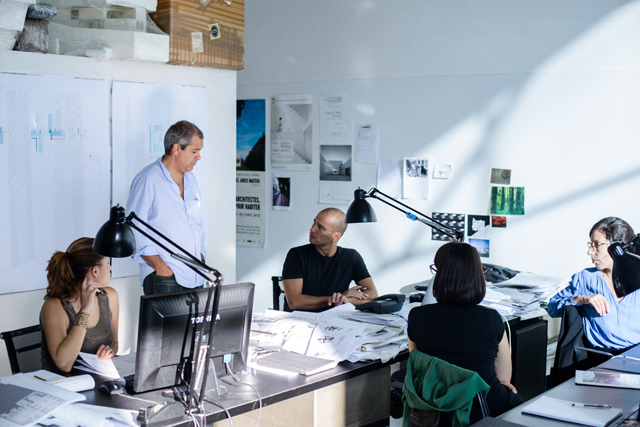
© João Carmo Simões .com – Todos os direitos reservados
Looking at your journey, already long, and with a mediated look, does that look make up for the lack of “youth”?
MM – In some things, yes, but not in others. I think experience is a value! And when we say that we are already able to reflect on what we do, it is because time has passed … and that pays off – but only if we manage to keep this youthful anxiety. Architects are no longer interesting when they stop worrying, and most of them, at a certain point in life, stop worrying and – in fact – stop being interesting! It is usually the phase when they become more known and even start to have larger workshops! But in reality, for architecture, they have no interest at all. They are going to produce a lot! I think we will only stay interesting as long as we can get upset and doubt!
FM – This is a problem of creation. I tend to think that any gesture tells me when it is better to be calm and not bore myself anymore. There is, in fact, a moment, and sometimes it is not about age, it is about the person not being restless.
MM – There is the great danger: the experience is good but the habit is not!

